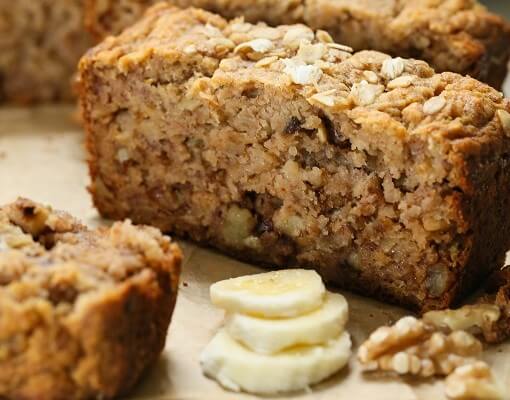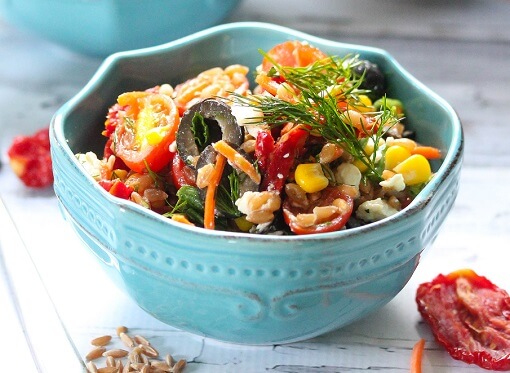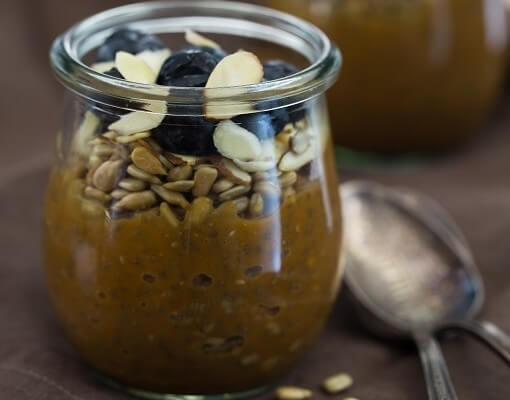6 Fat-Burning Foods for Your Diet

We rely on dietary fat for our bodies to work properly. However, getting too many calories causes your body to convert excess energy into body fat. The accumulation of body fat, particularly in the abdominal region, is associated with increased risk of cardiovascular disease, type 2 diabetes, and certain types of cancer (Harvard University, 2015). The foods you eat have a strong impact on your ability to metabolize excess fat. Incorporating these fat-burning foods into your diet will keep your metabolism humming along and may reduce your risk of chronic disease.
Almonds
Almonds are an excellent source of protein, but they may also have significant fat-burning power. Eating almonds every day is associated with greater weight loss and higher fat metabolism (Glatter, 2015). Indeed, eating plenty of almonds may reduce your levels of “bad” LDL cholesterol, improve your lipid profile, and target fat burning in your belly area. Try to eat 1.5 ounces of almonds daily -- equivalent to a large handful of the nuts or approximately 30 to 35 almonds -- to stimulate fat burning. Almonds are high in healthy monounsaturated fats, omega-3 fatty acids, fiber, and protein. In addition to snacking on whole almonds, you can bake with almond flour or add the nuts to a salad for extra crunch.
Dairy Products
Eating plenty of dairy products can actually increase your ability to metabolize fat. A 2004 study published in Obesity Research compared a standard diet, a high-calcium diet, and a high-dairy diet to determine which was most effective in helping obese individuals lose weight (Zemel et al., 2004). The results of the study showed that a high-dairy diet was associated with significant weight and fat loss, particularly from the torso. The vitamin D and calcium in dairy products may facilitate this effect. To ensure you get enough, increase your consumption of milk, yogurt, and hard cheeses. Aiming to get three or four servings of dairy products can stimulate fat loss, while choosing nonfat dairy may reduce your caloric intake.
Green Tea
Millions of people around the world enjoy tea with their meals. Green tea is remarkably high in antioxidants, beneficial compounds that combat cellular oxidative damage. Tea is also an excellent source of a polyphenol known as epigallocatechin gallate, or EGCG. In animal studies, dietary supplementation with EGCG decreased fat absorption, revved up fat metabolism, and resulted in lower overall body fat (Klaus, Pultz, Thone-Reineke, & Wolfram, 2005). Drinking EGCG-rich green tea every day may help stimulate fat loss. Begin each morning with green tea, or stir matcha green tea powder into a smoothie to jumpstart your metabolism. Then, enjoy two or three additional servings of green tea everyday for fat-burning success.
Eggs
Eggs are a fantastic source of protein, containing all of the essential amino acids your body needs to maintain its health. Not only do eggs contain plenty of protein, but they also have fewer than 80 calories apiece, helping your body burn excess fat. Eggs also contain 13 essential vitamins and minerals that keep your body working well. In a clinical study, eating two eggs for breakfast each day was shown to reduce body weight as well as body fat (Vander Wal, Gupta, Khosla, and Dhurandhar, 2008). Importantly, the protein in egg prevents you from experiencing food cravings that can result in excessive caloric intake.
Hot Peppers
That fiery sensation you get when you bite into a hot pepper? That is the work of a compound known as capsaicin. Consuming capsaicin revs up your metabolism and is associated with greater fat-burning power. For example, rats on a high-fat diet who are given capsaicin have greater activity of enzymes that metabolize fats (Kawada, Hagihara, & Iwai, 1986). Capsaicin may even be able to regulate your body’s longer-term control over metabolism, turning on and off certain genes that affect fat burning. In general, the hotter the pepper, the greater the amount of capsaicin it contains.
Fatty Fish
It may seem a bit counterintuitive to eat fatty foods to burn body fat, but it all depends on the types of fat you eat. Fatty fish, such as salmon, mackerel, tuna, anchovies, or sardines, are rich in omega-3 fatty acids. In particular, these fish contain DHA and EPA, two types of omega-3 fatty acids with excellent fat-burning powers. To ensure you get enough of these beneficial nutrients, aim to eat at least two or three servings of fatty fish per day. Taking fish oil pills is another good way to get these beneficial fatty acids into your diet.
Fat-Burning Recipes
The following recipes include one or more of the foods listed above along with other wholesome ingredients to help you burn fat as part of a balanced diet.

Matcha Green Tea Smoothie Recipe {gluten-free, vegan}
This smoothie combines matcha green tea powder, almond milk and almond flour into a delectable drink that is surprisingly wholesome. The recipe also includes flaxseed meal, which provides a source of ALA, a type of essential omega-3 fatty acids, to help encourage weight loss.
Ingredients: Almond milk, matcha green tea powder, hemp protein powder, almond flour, dried mulberries, pitted dates, flaxseed meal, ice cubes, stevia powder.
Total Time: 5 minutes
| Yield: 4 smoothies

Kale Quinoa Salad Recipe
This scrumptious salad is a simple blend of superfoods quinoa and kale, along with some red cabbage, carrots, and fresh dill. Seasoned with olive oil, the salad is coated with a source of omega-3 fatty acids and is meant to be accompanied by a hearty egg.
Ingredients: Quinoa, fresh baby kale, purple cabbage, carrots, fresh dill, boiled eggs, rice wine, extra virgin olive oil, black pepper.
Total Time: 25 minutes
| Yield: 8 servings

Banana Bread Recipe {gluten-free}
Banana bread is a superb snack to enjoy between meals with a rich flavor that you’re sure to love. This variety is gluten-free to accommodate those with dietary restrictions and includes eggs, almond milk, and walnuts. Walnuts are rich in ALA to support a healthy metabolism.
Ingredients: Overripe bananas, eggs, coconut oil, applesauce, almond milk, honey, vanilla extract, brown rice flour, coconut flour, walnuts, gluten-free rolled oats, baking soda, baking powder.
Total Time: 1 hour
| Yield: 12 servings

Farro Vegetable Salad Recipe
This tasty blend of wholesome ingredients includes both feta cheese and olive oil to supply a source of dairy and the omega-3 fatty acid ALA. Not only do these ingredients facilitate the metabolism of fat, but they also contribute to the dish’s delicious savor.
Ingredients: Organic farro, sun dried tomatoes, frozen corn (thawed), scallions, black olives, feta cheese, cherry tomatoes, shredded carrots, salt, fresh dill, fresh mint, extra virgin olive oil, balsamic vinegar.
Total Time: 1 hour
| Yield: 6 servings

Pumpkin Chia Seed Pudding Recipe
A healthy way to start your day, this palatable pumpkin pudding includes dairy, in the form of your choice of milk, as well as both almonds and chia seeds. Chia seeds supply a source of ALA and contribute to the crunch of this pudding’s nutty toppings!
Ingredients: Milk, pumpkin puree, chia seeds, maple syrup, pumpkin spice, sunflower seeds, sliced almonds, fresh blueberries.
Total Time: 10 minutes
| Yield: 4 servings

Chocolate Banana Coconut Flour Muffins Recipe {gluten-free}
This dessert is made with both eggs and Greek yogurt to combine the benefits of these fat-burning foods into a superbly sweet treat. The savors of a decadent dark chocolate and a sugary banana create a delectable blend of flavors for the perfect after-dinner delight.
Ingredients: Coconut flour, Greek yogurt, eggs, bananas, unrefined sugar, dark chocolate, baking soda, vanliia extract
Total Time: 30 minutes
| Yield: 12 muffins
Healthy Eating
- Healthy Snacks
- Healthy Meals
- Healthy Recipes
- Sports Nutrition
- Nutrition and Special Diets
- 21 Day Fix
- 5 Popular Diet Similarities
- Alkaline Diet
- Anti-Inflammatory Diet
- Calorie Counting
- Carb Cycling Diet
- Celiac Disease
- Cholesterol
- Clean Eating
- Crohn's Disease
- DASH Diet
- Detox Diet
- Diabetes
- Diabetes Diet
- Diet Pill Dangers
- Fat Burning Foods
- Gluten-free Diet
- Glycemic Index
- Heart Health
- High Blood Pressure Diet
- High Fiber Foods
- How to Eat Healthy
- How to Lower Blood Pressure
- Hypertension
- IBS Diet
- Ketogenic Diet
- Liquid Diet
- Low GI Foods
- Low-Carb Diet and Foods
- Low-Fat High-Carb Diet
- Mediterranean Diet
- Mediterranean Diet Foods
- Military Diet
- Nutrition Labels Explained
- Paleo Diet
- Raw Food Diet
- Superfoods
- Sustainable Weight Loss
- Thrive Diet
- Vegan Diet
- Vegetarian Diet
- Weight Loss Shakes
- Whole30
- Vitamins, Minerals & Nutrients
